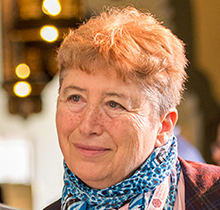In a nutshell
Electoral participation typically declines in the post-baby-boomer generations, but unlike in North American and European countries, this trend has reversed in Turkey in the generation born after 1980.
The relationships between turnout and education, and between turnout and political competition are inverted U-shapes; large populations, large numbers of members of parliament and low electoral participation in the past depress the turnout rate of a constituency.
Internal migration has an adverse effect on political participation both in provinces that both send and receive migrants; but in electoral districts with heavy concentrations of immigrants, the opportunity they have to elect one of their own reduces this negative impact considerably.
Studies of electoral participation both at the constituency and individual levels indicate that it is determined by socio-economic factors, such as urbanisation and education; by demographic factors, such as age distribution, emigration and immigration; by political factors, such as the number of parties contesting the election and the degree of competition between them; and by institutional factors, such as the election system and the number of members of parliament being elected.
Across the 81 provinces of Turkey, there is great variation in these factors as well as in local rates of voter turnout. Using econometric methods, we have analysed cross-provincial data for the 2011 Turkish parliamentary election to measure the effects of various variables on electoral participation.
Education
Learning voting procedures, understanding the issues facing the country and the province, and gathering and evaluating information on the candidates and parties all require a certain level of education. This critical level appears to be five years of education.
A percentage point increase in primary school graduates in a province is estimated to raise the turnout rate by 0.23 points. Additional education beyond that does not increase the turnout. In fact, each percentage point increase in those with a college or postgraduate degree reduces the turnout rate by 0.12 points.
This helps to explain what political scientists call Brody’s puzzle: why, despite rising education levels, political participation fails to increase. In short, the education-turnout relationship has an inverted U-shape with a flat top. More education makes it easier to understand the issues and evaluate solutions proposed for them, but it also raises the value of time and the cost of voting.
Age and generation
As people get older, they become more experienced, more informed and more settled – and they acquire a greater sense of responsibility. These factors increase the probability that they will vote. But with age, the opportunity cost of time increases too and health deteriorates, which creates disincentives to vote.
Individuals born and raised in the same time period are exposed to the same socio-historical events, which shape their political socialisation. Consequently, political participation may vary between generations. Indeed, studies of other countries find political participation among baby boomers and the generation preceding it to be substantially higher than the generations that followed them.
Our results suggest that this is also true for Turkey but with one exception. It appears that the turnout rate, which declined in the post-baby-boomer generations, has more than recovered in Turkey among ‘millennials’ born after 1980, contrary to what is found in Western countries. That group also constitutes a larger portion of the electorate in Turkey than in Europe and North America.
In aggregate-level studies examining a single election, such as ours, it is not possible to separate the age and generational effects from each other. Our results show that their combined effects gave rise to a U-shaped relationship between age and turnout in 2011. As the share of the electorate under 30 and over 60 in a province increased by a percentage point, the turnout rate rose by 0.46% and 0.33%, respectively.
Population and numbers of representatives
The turnout rate tends to be lower in provinces with large populations and a high number of members of parliament. In all democratic societies, individuals who do not vote are stigmatised. But it is easier for non-voters to remain anonymous in urban areas than in rural areas.
Populous provinces also have more names on their ballots. This complicates voting and raises the cost of acquiring information about the candidates. Each additional member of parliament from an electoral district lowers the electoral participation by 0.36 points.
Migration
Migration affects turnout adversely both in sending and receiving provinces. There are a number of reasons for this:
- First, with emigration, a province loses the portion of its population that is most active politically.
- Second, remittances sent by these people to their relatives back home reduce the latter’s dependence on the state and thus decrease their incentives to get involved with politics.
- Third, the ones left behind often are just waiting for their turn to migrate and thus are less interested in local affairs.
- Fourth, immigrants are too busy trying to make it at their destinations to spare time for political activity. They have less knowledge of the candidates and the issues at their new locations, and those issues may not be their own. Consequently fewer of them vote.
A percentage point increase in the proportion of emigrants in the population born in a province reduces that province’s turnout rate by 0.11 points, while a percentage point increase in the share of immigrants in the population of a province reduces it by 0.07.
An exception is the case of large urban constituencies, where high numbers of immigrants from particular regions of the country are concentrated and where the number of members of parliament elected is large. In such provinces, the opportunity to elect one of their own encourages immigrants to participate in the election.
Each member of parliament being elected from a constituency lowers the 0.07 figure by 0.004. This turns the negative impact of immigration to positive in the electoral districts of Istanbul, for example, and reduces it considerably in the electoral districts of Ankara and Izmir.
Inter-party competition
In a proportional election system, the goal of voters in casting their ballots is to gain one more seat in the parliament for their party. When this is almost impossible or guaranteed, they are left with little incentive to participate. For that reason, in provinces where one party captures all seats (14 of 81, in 2011) the turnout rate is lower. Voters will also be more reluctant to participate when they have difficulty finding a party that represents their interests and worldview.
A large number of parties contesting the election eliminates this possibility. But when the votes are spread among too many parties, the D’Hondt system used in Turkey, by favouring big parties, reduces inter-party competition. This reduces the enthusiasm of small party supporters for participating in the election. In short, both too little and too much competition leads to reduced voter turnout.
Past participation
Voting is habit-forming. Turnout tend to be higher in provinces with high turnout rates in previous elections.
Concluding remarks
There is no doubt that in the near future, Turkey will continue experiencing population growth, urbanisation, internal migration and a rise in the number of people with university degrees, which will exert downward pressure on electoral participation. But the inertia provided by the high current turnout rate and the rising share of the millennial and post-millennial generations in the electorate are likely to offset the impacts of these, as they did in the recent past.
Our results suggest that the turnout rate of the country can be made even higher, if large electoral districts are partitioned, especially if it is done without splitting migrant communities and without reducing political competition too much.
Further reading
Akarca, Ali, and Aysit Tansel (2015) ‘Impact of Internal Migration on Political Participation in Turkey’, IZA Journal of Migration 4: 1-14.



